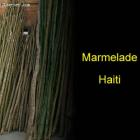The Dominican Republic and Haitian Sugarcane Workers
ADVERTISEMENT
Poor Working Conditions
Access to healthcare and working and living conditions in the Dominican Republic are very often poor. There is lack of electricity, sanitary facilities and running water. After Christopher Columbus's colonization, the sugarcane plant was introduced.
However it was in the 1900s that the sugarcane industry started in the Dominican Republic with United States acting as a catalyst for developing it. In 1905 the DR was controlled by the United States under the Big Stick policy of Roosevelt. In 1915, Haiti was invaded by troops from America. Political stability was established in the island after the occupation of United States.
Monopoly Over The Sugarcane Industry
Irresponsible dictators ruled the Dominican Republic in the 1800s. The United States realized Haiti as a strategic location in the midst of the First World War. Accordingly, the government of US made a decision to assume Haitian and Dominican foreign and domestic debt to keep its power and prevent Europe from laying their hands on any valuable possessions.
Financial state of the island was controlled by the US. The sugar industry was helpful to pay off the foreign debt. This occupation was taken advantage of by sugarcane companies and monopolies over the sugar industry in the Dominican were established. The monopoly was such that Dominicans in large numbers were stripped of their land.
The sugar plantations helped in making huge profits which companies in the US enjoyed. The sugar beet industry in Europe was in shambles and under the US rule, in 1920, DR became a large sugar exporter. Natural resource was the Haitian population. Across the border, Haitians or cheap labor in thousands were brought over by US companies.
Nationalization Of Sugar Industry
When US withdrew itself from the Dominican Republic, the regime of Trujillo began from 1930 up to 1961. Prices of sugarcane dropped when the Great Depression began and Haitians across the border were not required any longer.
In the 1950s, the sugarcane industry was nationalized and labor agreements were signed with the government of Haiti. Thousands of people from Haiti were allowed to be imported to perform seasonal labor.
Read more: immigration, Dominican Republic, Sugarcane, Dominican Tips, Batey, International
« Parsley Massacre - Slaughtering of Haitians By The Dominicans | Main | Parsley Massacre - Slaughtering of Haitians By The Dominicans »
Leave a Reply
Name (required) E-mail (required, will not be published)
» »
Our objective is to share with you news and information about Haiti and the people of Haiti. Traditions, habits and the way we were or grew are alive in this site. We highly recommend that you Subscribe to our Newsletter and also share with us some of the things that are memorable and made us unique people.


 Something to think about
Something to think about  Marmelade, Haiti
Marmelade, Haiti  Haitian Thanksgiving
Haitian Thanksgiving  Newsletter
Newsletter  Haitians are a Proud People
Haitians are a Proud People